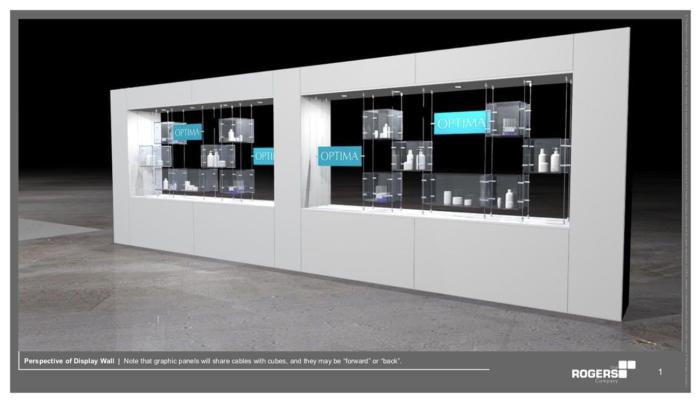Using Video to Showcase Products shines a spotlight on the power of visual storytelling in captivating audiences and driving sales. From unboxing videos to customer testimonials, this dynamic approach to product promotion is reshaping the marketing landscape.
Learn how brands are leveraging the art of video production to create compelling narratives that resonate with consumers and elevate brand visibility.
Importance of Using Video to Showcase Products
Video content has become an essential tool for businesses looking to showcase their products effectively. The visual and auditory elements of video can capture the audience’s attention better than text or images alone, making it a powerful medium for promoting products.
Enhanced Product Visibility
Using video to showcase products can significantly increase brand visibility and recognition. For example, companies like Apple have successfully utilized product videos to highlight the features and benefits of their latest devices, creating buzz and excitement among consumers. These videos not only showcase the product itself but also convey the brand’s identity and values, helping to strengthen customer loyalty and engagement.
Improved Customer Engagement
Product videos can also enhance customer engagement by providing a more immersive and interactive experience. For instance, makeup brands like Sephora often create tutorial videos demonstrating how to use their products, allowing customers to see the results in action. This interactive approach not only educates customers but also builds trust and confidence in the product, leading to increased sales and brand loyalty.
Impact on Sales
Numerous studies have shown that product videos can have a significant impact on sales. According to a report by HubSpot, including a video on a landing page can increase conversion rates by 80%. This is because videos have the ability to convey information quickly and effectively, leading to higher engagement and ultimately more sales.
Types of Product Videos

When it comes to showcasing products through video, there are several types of videos that brands can utilize to engage with their audience and drive sales. Each type serves a unique purpose and offers specific benefits to both the brand and the consumer.
Unboxing Videos
Unboxing videos have gained immense popularity in recent years, as they provide viewers with a firsthand look at the packaging and contents of a product as it is being opened. The purpose of unboxing videos is to create excitement and anticipation around the product, often showcasing the unboxing experience as part of the overall appeal. Brands can benefit from unboxing videos by generating buzz and curiosity around new product launches, while consumers get a sneak peek into what they can expect when they purchase the product.
Demo Videos, Using Video to Showcase Products
Demo videos are instructional in nature, showing the product in action and highlighting its key features and benefits. The purpose of demo videos is to provide consumers with a better understanding of how the product works and how it can benefit them in their daily lives. Brands can benefit from demo videos by showcasing the product’s functionality and versatility, helping consumers make informed purchasing decisions.
Examples of brands effectively using demo videos include Apple, showcasing the latest iPhone features, and KitchenAid, demonstrating the capabilities of their stand mixers.
Testimonial Videos
Testimonial videos feature satisfied customers sharing their positive experiences with a product. The purpose of testimonial videos is to build trust and credibility, as consumers are more likely to trust the opinions of their peers. Brands can benefit from testimonial videos by leveraging social proof and creating a sense of authenticity around their products. Examples of brands effectively using testimonial videos include Peloton, featuring success stories from their fitness community, and Glossier, highlighting customer reviews of their skincare products.
Best Practices for Creating Product Videos

When it comes to creating product videos, there are some key steps and tips to keep in mind to ensure your videos are high-quality and effective in showcasing your products.
Plan and Produce with Purpose
- Start by defining your goals and objectives for the video. What do you want to achieve with this video?
- Artikel a storyboard or script to guide the production process and ensure a cohesive narrative.
- Pay attention to lighting, sound quality, and camera angles to capture your products in the best possible way.
Optimize for Different Platforms
- Consider the platform where your video will be shared and tailor the content accordingly (e.g., square format for Instagram, longer format for YouTube).
- Use subtitles or captions to make your video more accessible and engaging for a wider audience.
- Experiment with different video lengths and styles to see what resonates best with your target audience on each platform.
Incorporate Storytelling and Emotions
- Create a narrative around your product that resonates with your audience’s emotions and values.
- Showcase real-life scenarios or testimonials to demonstrate how your product can solve a problem or enhance the customer’s life.
- Use music, visuals, and voiceovers to create a mood and evoke emotions that connect viewers to your brand and product.
Tools and Equipment for Shooting Product Videos
To create professional product videos, it is essential to have the right tools and equipment. This includes cameras, lighting setups, and editing software that can enhance the overall quality of the videos.
Cameras
When it comes to choosing a camera for shooting product videos, there are several options available. DSLR cameras are popular due to their high-quality video capabilities and interchangeable lenses. Mirrorless cameras are also a great choice for their compact size and excellent video quality. For those on a budget, a good quality smartphone with a high-resolution camera can also be used effectively for shooting product videos.
Lighting Setups
Proper lighting is crucial for creating visually appealing product videos. Softbox lights are commonly used to create a diffused and even light source that helps eliminate harsh shadows. Ring lights are also popular for providing a soft, even light that can highlight the product effectively. Additionally, using natural light from a window can also be a cost-effective way to achieve good lighting for product videos.
Editing Software
After shooting the product videos, editing software is needed to enhance the footage and create a polished final product. Popular editing software options include Adobe Premiere Pro, Final Cut Pro, and DaVinci Resolve. These software programs offer a wide range of editing tools and effects to help bring your product videos to life.
Setting up a Home Studio
Creating a cost-effective home studio for shooting product videos can be done with a few key pieces of equipment. A backdrop stand with different colored backdrops can help create a professional-looking set. Tripods are essential for stabilizing the camera during filming. Additionally, investing in a microphone for clear audio recording and a reflector for bouncing light can also improve the overall quality of your product videos.
Distribution Strategies for Product Videos
In today’s digital age, having a well-thought-out distribution strategy for product videos is crucial to reaching your target audience effectively.
Importance of a Multi-Channel Distribution Strategy
- Utilizing multiple channels such as social media, email marketing, and websites increases the visibility of your product videos.
- Reaching customers on various platforms enhances brand awareness and drives engagement.
- Diversifying distribution channels mitigates the risk of relying solely on one platform.
Leveraging Social Media, Email Marketing, and Websites
- Social Media: Share product videos on platforms like Instagram, Facebook, and Twitter to reach a wider audience. Use targeted ads to maximize reach.
- Email Marketing: Include product videos in email campaigns to showcase new products and drive traffic to your website.
- Websites: Embed product videos on your website’s product pages to provide customers with a more engaging shopping experience.
Analytics Tools for Tracking Performance
- Use tools like Google Analytics, YouTube Analytics, and social media insights to track views, engagement, and conversions from product videos.
- Monitor key metrics such as click-through rates, watch time, and shares to assess the effectiveness of your distribution strategy.
- Adjust your approach based on analytics data to optimize the performance of your product videos.
Case Studies: Using Video To Showcase Products
In this section, we will delve into various case studies of brands that have successfully utilized product video campaigns to boost their marketing efforts.
Apple’s iPhone Launch Campaign
Apple’s product video campaign for the launch of the iPhone is a prime example of a successful marketing strategy. The key to their success was the seamless integration of product features with a captivating storyline that resonated with their target audience. By highlighting the sleek design, innovative technology, and user-friendly interface of the iPhone, Apple was able to create a buzz and generate excitement around their product.
Nike’s “Dream Crazy” Campaign with Colin Kaepernick
Nike’s “Dream Crazy” campaign featuring former NFL player Colin Kaepernick is another standout example of a successful product video campaign. By tapping into social issues and promoting a message of empowerment and perseverance, Nike was able to connect with consumers on a deeper level. The use of powerful visuals, emotional storytelling, and a strong call-to-action helped propel this campaign to success.
GoPro’s User-Generated Content Strategy
GoPro’s approach to product video campaigns revolves around user-generated content, where customers showcase their adventures and experiences using GoPro cameras. By leveraging the creativity and authenticity of their customers, GoPro has been able to build a strong community around their brand and inspire others to share their own stories. This strategy not only drives engagement but also serves as a powerful testimonial to the quality and versatility of GoPro cameras.
